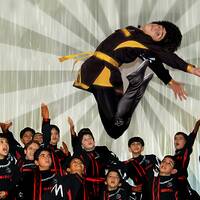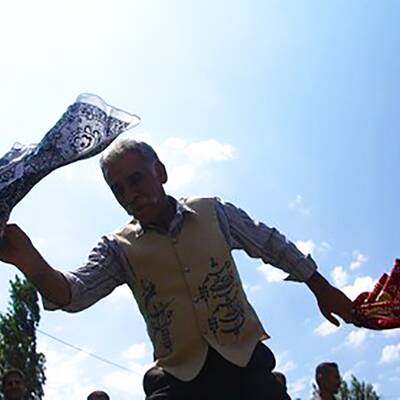
Azerbaijani Dance
Azerbaijani dances in various styles and manners have existed since ancient times in the lives and culture of the Azeri-speaking people. They encompass epic, heroic, religious, and symbolic aspects such as religious rituals, combat and military readiness, pre-hunting ceremonies, agriculture and abundance, celebration of victory, gratitude to God, or breaking spells, etc., which are observed in Iranian Azerbaijan and the country of the Republic of Azerbaijan. Each dance has its own specific meaning and concept and is performed in special ceremonies, closely linked to the material and spiritual transformations of the people in Iran. Most Azerbaijani dances are lyrical, while some are lively and enthusiastic, and others are sad. These dances incorporate both movement and skill, with diverse forms and performing styles. Movements are performed individually or collectively by both men and women. Dancers are divided into various groups and formations, wearing special costumes and attire representing different regions of Azerbaijan. Each dancer takes turns showcasing a specific part of the dance, with a broad chest, a gaze into the distance, and a proud demeanor. Movements can be calm or vigorous, involving leaps and quick jumps, reaching their climax with fast-paced rhythms and displaying martial skills. Fitness, agility, and dexterity are essential for dancers.
Considering the multitude and diversity of Azerbaijani dances, they are categorized based on the name of the location or famous individual, linguistic concept, and performance style as follows:
Melodic and lyrical dances: Yalli, Shalakho, Ovzarin Darra, Terkeme, Vaghzali, Sendirma, Turaji, Gulom Ai, Qitqildi, Alma, Laleh, Dastmal, Yeri-Yeri, and more.
Heroic and combat dances: Kazakh, Caucasian, Lazgi, Qaytaghi, Koroghlonun QaytarMasi, Koroghlonun BaqirTisi, Misri, Zuti-Zuti, Zenjir Tutmaq, Tar Abasi, and more.
Ceremonial dances: Kusa-Kusa, Azerbaijan, Mirzayi, Asma Kusme, Aghirqaradaghi, and more.
A brief overview of the most famous Azerbaijani dances:
The "Koroglu" dance is one of the rhythmic movements with ancient Azerbaijani roots, performed in various forms and titles accompanied by the sounds of the Sorna and drum. This dance is vigorous, heroic, and martial, starting slowly and gradually increasing its tempo. It is named Koroglu in memory of the feudal-era legendary hero.
The "Misri" dance (derived from the Arabic sword associated with Koroglu) is often performed by enthusiasts with challenging and heavy movements, usually using a sword.
The ancient and traditional "Yalli" dance was initially performed as a traditional ceremony around the fire. This dance is performed in various forms, accompanied by musicians playing the Sorna and drum, in a long line holding hands and with a scarf or stick held by the leader of the line. It begins slowly and ends with fast steps.
"Lazgi" is an energetic, dignified, highly active, and rhythmic dance performed collectively by men, including individual performances showcasing fast footwork and toe movements. It features unique movements symbolizing horsemen leaping with a dagger in hand or clenched fists.
"Turaji" evokes the melancholic and heart-touching flight of a bird called "Duraaj" (Black Francolin) in the sky with mournful music. "Jirani" derives its name from its elegance and melodiousness, resembling a gazelle. " Caucasian " is a lively dance with complex movements and is particularly popular among men. Dances such as Shalakho is restricted to men in Azerbaijan and some others including Aay Bari Bakh, Annabi and Mirvari are only performed by women. There are also unique dances for elderly people.
.jpg)
.jpg)
.jpg)
.jpg)
.jpg)
.jpg)

